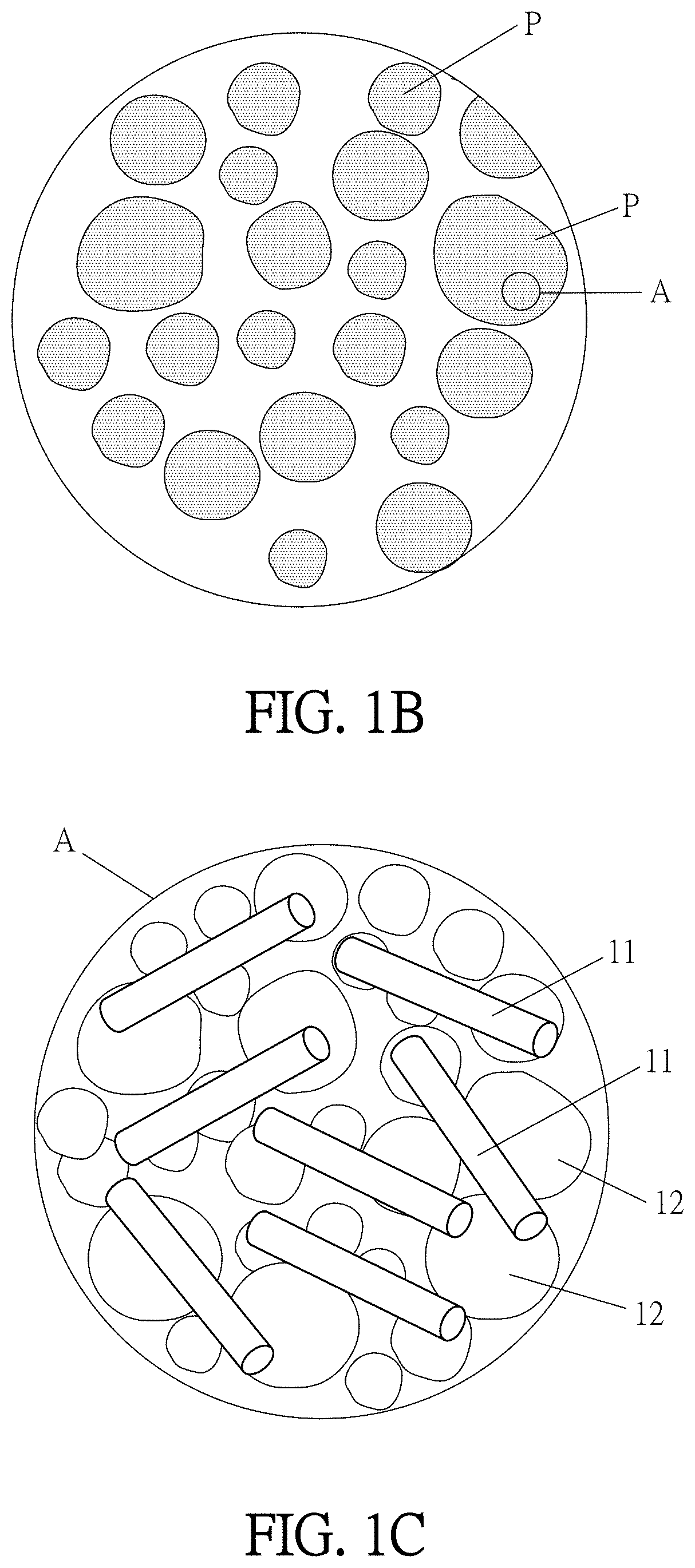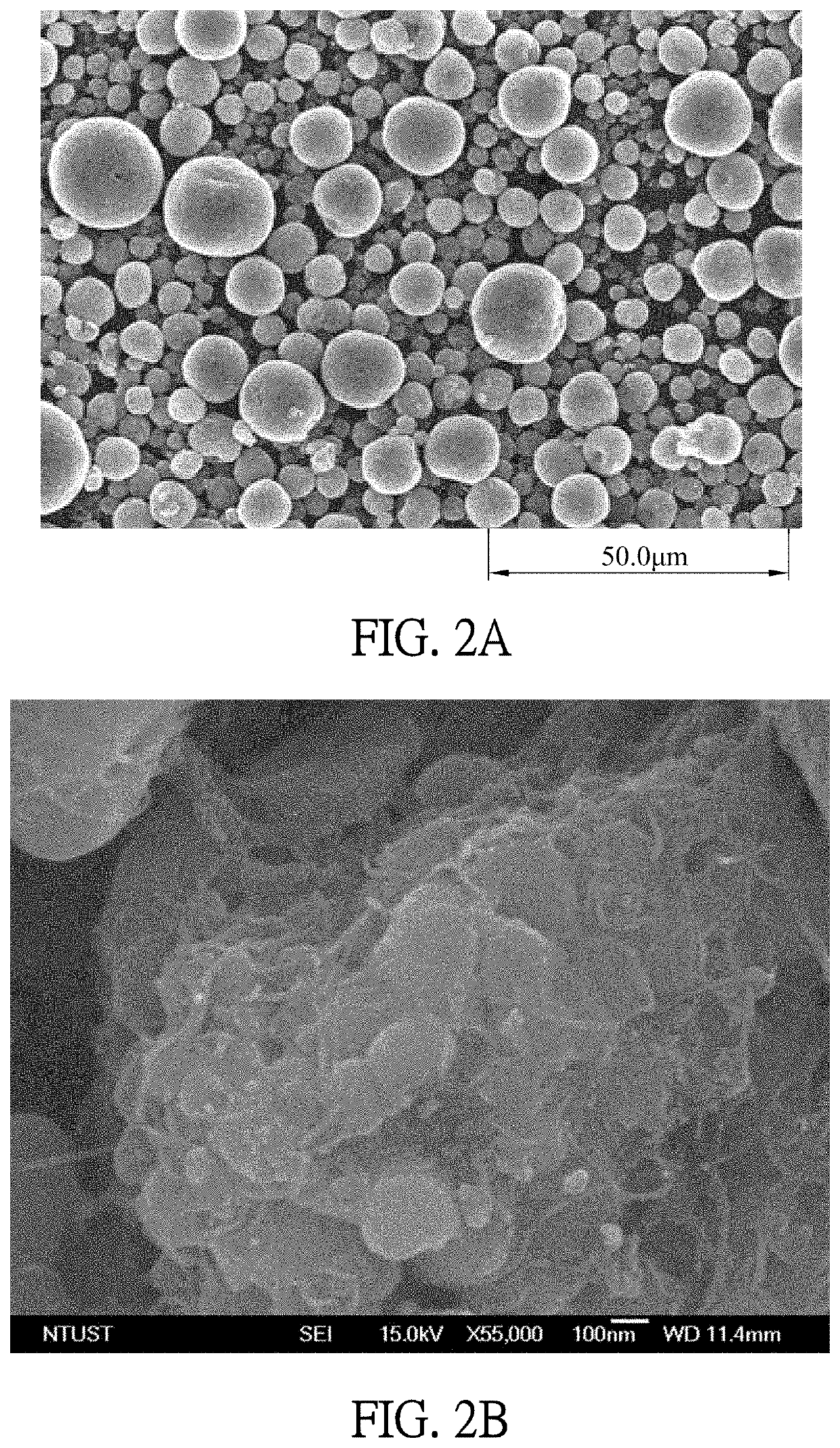Negative electrode material and negative electrode composite slurry for lithium ion battery
a lithium ion battery and composite slurry technology, which is applied to active material electrodes, cell components, electrical equipment, etc., can solve the problems of self-discharge of batteries, short capacity fading, and decline in battery cycle characteristics, so as to improve the capacity and cycle characteristics of lithium ion batteries, prevent the problem of battery expansion, and improve the effect of battery li
- Summary
- Abstract
- Description
- Claims
- Application Information
AI Technical Summary
Benefits of technology
Problems solved by technology
Method used
Image
Examples
example 7
on of Negative Electrode Composite Slurry A
[0056]The negative electrode material 1 obtained in Example 1, graphite (150 g), carboxymethyl cellulose (3 g), and styrene butadiene rubber (3 g) are added to water (300 g). The mixture is well mixed for 6 hours so as to obtain the uniformly mixed negative electrode composite slurry A. Herein, water is used as the second solvent, and carboxymethyl cellulose and styrene butadiene rubber are used as the second binder.
example 8
on of Negative Electrode Composite Slurry B
[0057]The negative electrode material 2 obtained in Example 2, graphite (150 g), carboxymethyl cellulose (3 g), and styrene butadiene rubber (3 g) are added to water (300 g). The mixture is well mixed for 6 hours so as to obtain the uniformly mixed negative electrode composite slurry B. Herein, water is used as the second solvent, and carboxymethyl cellulose and styrene butadiene rubber are used as the second binder.
example 9
on of Negative Electrode Composite Slurry C
[0058]The negative electrode material 3 obtained in Example 3, graphite (150 g), carboxymethyl cellulose (3 g), and styrene butadiene rubber (3 g) are added to water (300 g). The mixture is well mixed for 6 hours so as to obtain the uniformly mixed negative electrode composite slurry C. Herein, water is used as the second solvent, and carboxymethyl cellulose and styrene butadiene rubber are used as the second binder.
PUM
 Login to View More
Login to View More Abstract
Description
Claims
Application Information
 Login to View More
Login to View More - R&D
- Intellectual Property
- Life Sciences
- Materials
- Tech Scout
- Unparalleled Data Quality
- Higher Quality Content
- 60% Fewer Hallucinations
Browse by: Latest US Patents, China's latest patents, Technical Efficacy Thesaurus, Application Domain, Technology Topic, Popular Technical Reports.
© 2025 PatSnap. All rights reserved.Legal|Privacy policy|Modern Slavery Act Transparency Statement|Sitemap|About US| Contact US: help@patsnap.com



